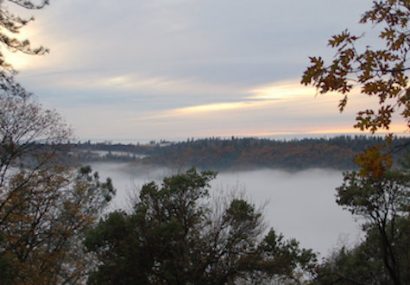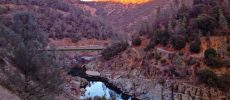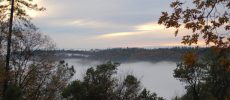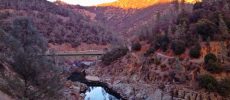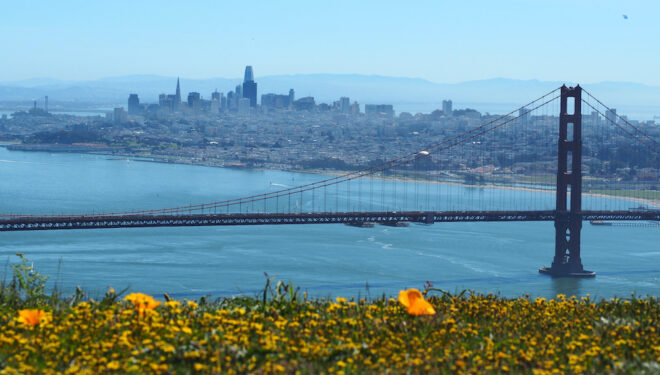
By Jake R. Voorhees and Austn Cho
On July 24, 2025, the State Water Resources Control Board (State Water Board) released a Revised Draft Update to the Water Quality Control Plan for the San Francisco Bay/Sacramento-San Joaquin Delta Watershed (Bay-Delta Plan). The Revised Draft Update proposes to adopt the two implementation pathways previously introduced to achieve new water quality objectives: a default regulatory pathway and an alternative means of compliance through voluntary agreements under the Healthy Rivers and Landscapes (HRL) program. Written public comments may be submitted by September 29, and the State Water Board will hold a two-day public hearing on September 24-25 to receive input.
Background
The Bay-Delta watershed includes the San Francisco Bay, the Delta, Suisun Marsh, and the San Joaquin and Sacramento Rivers. It serves as one of the largest ecosystems for fish and wildlife habitat and production in the United States, a source of drinking water for two-thirds of California’s population, and the water supply for some of the State’s most productive agricultural areas. The Bay-Delta watershed also serves as the water source for the two largest water projects in California, the federal Central Valley Project (CVP) and State Water Project (SWP).
Under the Porter-Cologne Act, the State Water Board and regional boards are responsible for regularly adopting water quality control plans for the protection of beneficial uses. (Revised Draft Update, at p. 5.) Specifically, a water quality control plan must “ensure that the state’s waters are put to the best possible use, and that the public interest is served.” (Ibid.) To fulfill this obligation, the State Water Board must develop water resources in an orderly manner, prevent the waste and unreasonable use of water, and protect the environment. (Ibid.)
The last substantial update to Bay-Delta water quality standards occurred in the 1990s, culminating in the 1995 Bay-Delta Plan and the State Water Board’s adoption of Decision (D-1641) in 1999, as revised in 2000. Under D-1641, the State Water Board assigned responsibility to the CVP and SWP to meet the water quality and flow requirements in the Bay-Delta watershed through conditions imposed on their water rights. The most recent update occurred in 2018, when the State Water Board changed flow standards for the Lower San Joaquin River and three of its major tributaries—the Tuolumne, Stanislaus, and Merced Rivers.
As part of the current planning process to update the Bay-Delta Plan, the State Water Board released a staff report in September 2023 and an earlier draft update in October 2024. The October 2024 draft update proposed significant changes to the existing Bay-Delta Plan, including flow, cold water habitat, and other provisions that would impose new obligations on water users beyond the requirements imposed by D-1641. The new flow objectives would require 55 percent of unimpaired flows to remain instream, within an adaptive range of 45 to 65 percent. The 2024 draft update proposed implementing the new water quality requirements under two concurrent pathways: a default regulatory pathway imposing the numeric unimpaired flow requirements on most water users, and an alternative voluntary agreement (VA) pathway that would involve a combination of flow and non-flow habitat commitments under the HRL program. The implementation details of the 2024 update largely focused on the regulatory pathway, noting that more information was needed to flesh out the HRL accounting and enforcement protocols. The State Water Board held a multi-day hearing and subsequent smaller virtual working group meetings to receive public input and written comments in late 2024 and early 2025.
The 2025 Revised Draft Update
Incorporating changes from prior comments and public participation in the workshops and working group meetings, the 2025 revised draft update proposes to move forward with a Bay-Delta Plan update that incorporates both the regulatory pathway and the HRL pathway for an expanded set of participating entities. (Revised Draft Update, at pp. 63-93.) The Revised Draft Update also includes new information on HRL flow accounting and monitoring and adds Tribal Tradition and Culture as a beneficial use to be protected by the Bay-Delta Plan. (Id. at pp. 8-10.)
The Regulatory Pathway
The 55 percent unimpaired flow numerical standard and adaptive range of the regulatory pathway remain largely unchanged, though the Revised Draft Update adds possible “water supply adjustments” to adopt a lower adaptive range of required unimpaired flows, down to 35 percent, for certain watersheds based on water availability. The water supply adjustments state that water right holders must allow 55 percent of unimpaired flows in the wettest third of years, 45 percent of unimpaired flow in the middle third, and 35 percent of unimpaired flow in the driest third. (Revised Draft Update at pp. 46-47.) The Revised Draft Update also includes tributary-specific water supply adjustments, based on the unique physical and hydrological conditions of those regions. (Id. at pp. 47-49.)
The updates to the regulatory pathway were made in response to concerns that unimpaired flows could negatively impact water supplies by drawing down reservoir supplies. The water supply adjustments appear to give water rights holders greater flexibility to meet environmental needs, while reducing the impacts on agriculture, municipal water service, and hydropower production.
The Healthy Rivers and Landscapes Pathway
The Revised Draft Update proposes to move forward with VAs under the HRL pathway as an alternative to the regulatory pathway to achieve the narrative biological objectives of the Bay-Delta Plan on the major tributaries to the Delta. (Revised Draft Update, at p. 63.) The most substantial updates relate to the addition of new details on the accounting and monitoring of flow and habitat contributions by participants under the HRL program. Appendix A to the Revised Draft Update includes a monitoring and evaluation program, while Appendices B1 and B2 describe accounting protocols for the flow and non-flow habitat contributions on each tributary.
As described in section 4.4.9.2, the flow contributions associated with individual VAs depend on the water source and water year type. (Id. at p. 65.) The Revised Draft Update sets out a “default schedule” that defines the proportion of the annual VA flow commitments that should be provided each month. (Ibid; see also Table 10 through Table 14.) However, parties to the VAs will need to consult with the State Water Board to determine the specific schedules for the release of water to meet their respective VA flow commitments, based on tributary and water source, each year. (Ibid.) Another important update in the Revised Draft Update is the inclusion of Appendix B.1, which details the draft accounting for each VA tributary, export reduction commitments, and water purchases.
Another significant update concerns the potential termination or extension of VAs after their eight-year term. Section 4.4.9.10 states that after a VAs has been implemented for six years, the participant may submit a request to the State Water Board to extend their VA. (Revised Draft Update at p. 89.) After receiving the extension request, the State Water Board will solicit public comments and hold a public workshop to discuss the possible extension and modification of the VA. After the public workshop, the State Water Board will prepare a draft recommendation on whether to extend, modify, or terminate the VA request. This draft recommendation must include the supporting rationale for the decision and is subject to a 45-day public review and comment period before the State Water Board can make a final decision. (Id.)
Conclusion and Implications
The State Water Board will hold public hearings to receive comments on the Revised Draft Update on September 24-25, 2025, at 1001 I Street, Second Floor Sacramento, CA 95814 and via video and teleconference. The deadline to submit written comments to the State Water Board is September 29, 2025. The final Bay-Delta Plan update is on track for adoption towards the end of 2025.
The Revised Draft Update is available at: https://www.waterboards.ca.gov/waterrights/water_issues/programs/bay_delta/.
